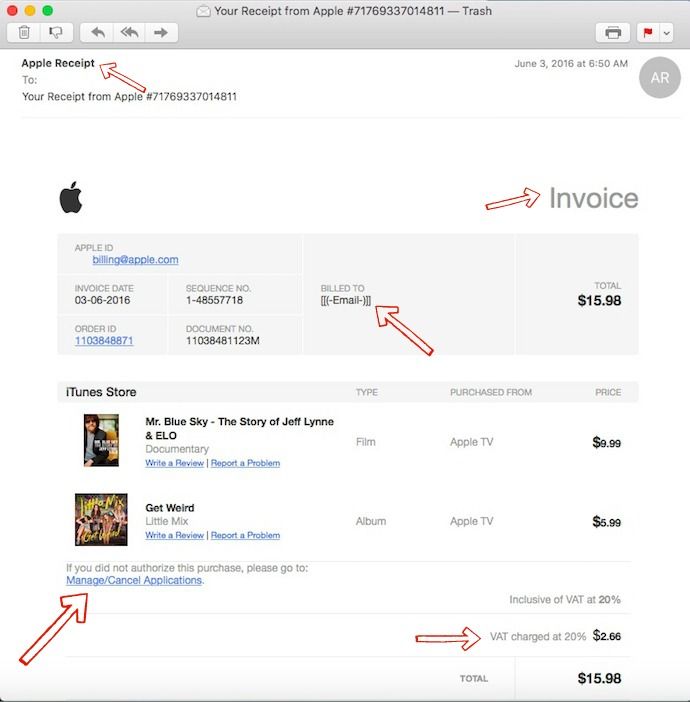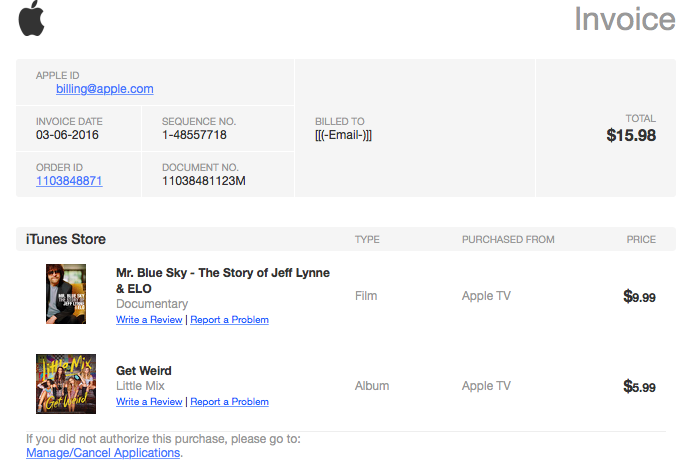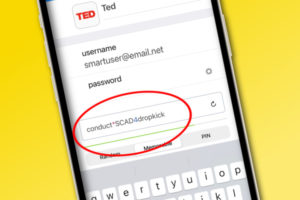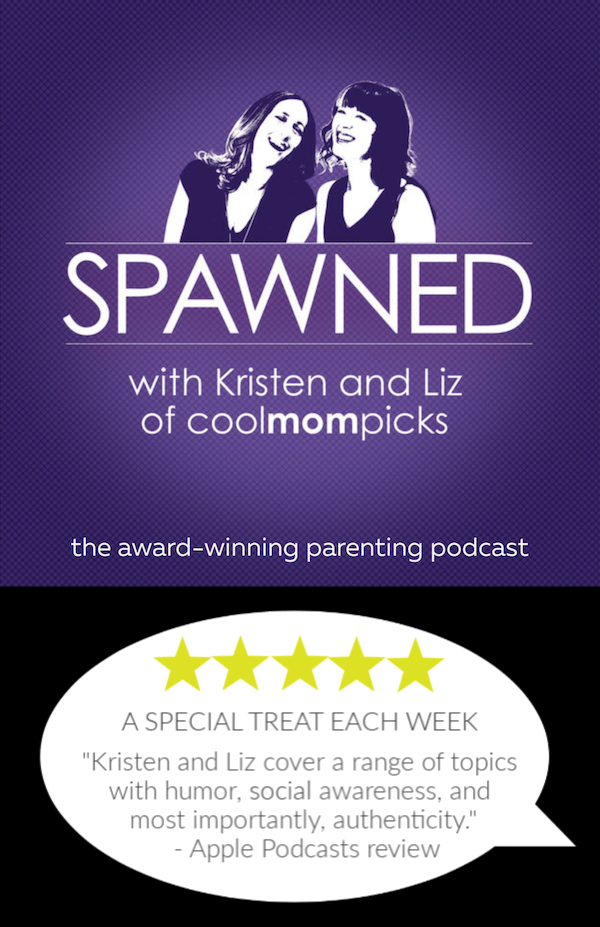This week I got a scam email claiming to be an invoice from my iTunes account on Apple. Luckily, a few things tipped me off that this wasn’t legit, so I contacted Apple about it and saved myself the tremendous hassle of having to change all my credit card numbers — such a pain.
Even though there were a things that tipped me off that this was a phishing scam, I have to say this one was pretty good. Here’s what you can look for, and what to do about it too. Be careful, parents!

What to look for in the Apple invoice scam email
I’ve set up passwords and disabled in-app purchases on my devices, but sometimes my kids still manage to break through that. But… probably not to download a documentary about Jeff Lynne and ELO, whoever they are. That was the first tip-off that something was up.
I also logged into my iTunes to see if these purchases were available for me to watch and listen to — they weren’t. Another warning sign.
Next, I looked through some of my old, legitimate emails from Apple to see if these were off, and it turns out it was. Look at the sender. Actual invoices from Apple are sent from Apple, not Apple Receipt.
At the top of the bill, where this scam says Invoice, an actual email from Apple says Receipt.
Where it says “billed to,” it would have your actual account info — mine has my PayPal info and full mailing address included — not this vague [[(-Email-)]]. Sketchy.
Also, none of my other legitimate Apple receipts have a link to dispute the purchase at the bottom, and they don’t charge VAT tax either.
Not to mention those weirdly huge dollar signs. Apple has better design sense than that.
What to do if you get an Apple invoice scam email
If you’ve gotten one of these emails and still aren’t sure if it’s legitimate or not, you can hop on a quick chat with an Apple representative via their website. Do not — do not! — click on the link in the email to dispute the charge. In your chat, Apple will ask for the email associated with your iTunes account, and they’ll look it up to see if these charges are, in fact, on your account. It took about 5 minutes for her to find out that these purchases weren’t on my account.
Next, forward the scam email to reportphishing@apple.com and let them take care of it from there. Then rest easy knowing your data hasn’t been stolen, and you haven’t spent $10 on a CD called Get Weird.







I now feel very old, as I DO know who Jeff Lynn and ELO (Electric Light Orchestra) are. You should feel great to know you’re so young!
Even worse, give a fake abusive email and password. The dirty bastards have even taken care of that, they know no bounds.
i get these emails all the time what tips me off is i have no apple id im not registered with i tunes
You know how I knew the e-mail was a scam? The message was a JPEG.